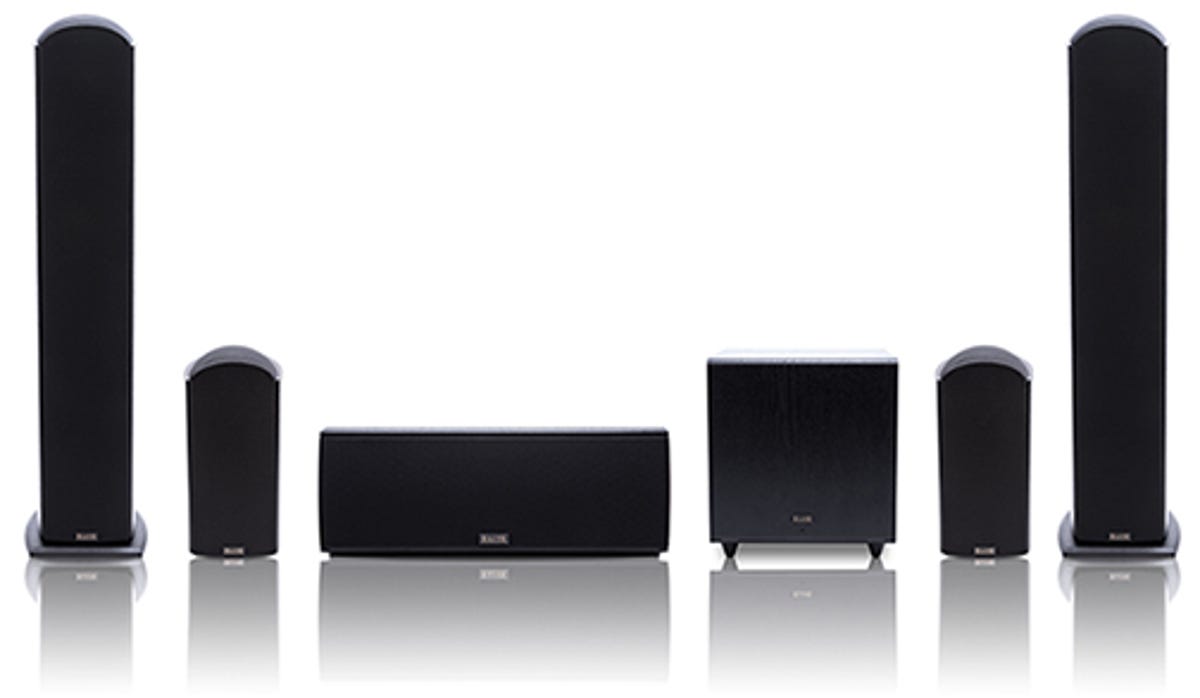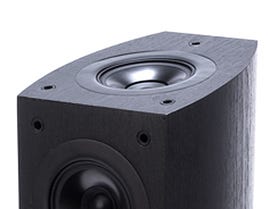
Pioneer Electronics
Andrew Jones has a degree in physics, but his real passion is speaker design. He started as a research engineer for KEF then moved to Infinity Speakers, but he’s mostly known for engineering with Pioneer; he’s chiefly responsible for their ultra high-end TAD Reference line of speakers that sell for close to $80,000! That’s great, but Jones also designed Pioneer’s astonishing SP-BS22-LR bookshelf speakers which run just $130 a pair!
More recently I’ve spent some time with Jones’ latest designs, namely the Pioneer Elite SP-EBS73-LR bookshelf speakers ($750 a pair), SP-EC73 center ($400), SP-EFS73 tower speakers ($700 each), and the SW-E10 powered subwoofer ($600). I had high expectations, but even so the speakers and sub blew me away.
It’s worth noting that all three Elite speakers, including the SP-EC73 center channel speaker are three-way (woofer/midrange/tweeter) designs, because Jones thinks the advantages of three-way over two-way (woofer/tweeter) designs are very significant. Also, the Elite speakers all share the same CST (Coherent Source Transducer) driver which Jones claims “reduces interference between the midrange and tweeter, precisely controlling sound directivity at all frequencies and ensuring that direct and reflected sound arrive at the listening position with identical timing and timbre.” The speakers also use 5.25-inch aluminum woofers.
The CST features a 1-inch soft-dome tweeter positioned in the center of a 4-inch aluminum midrange cone. I’m no speaker designer, but I was curious why Jones designed a soft dome tweeter for use with the 4-inch aluminum midrange driver, why not also use an aluminum dome tweeter? Wouldn’t an aluminum tweeter and midrange blend better? “You have to be very careful with aluminum,” Jones explained, “it’s not the best of materials for tweeters. They have gotten better over the years, but they’re not the best you can do.” Jones found the blend was simply better with the soft fabric dome tweeter and the aluminum midrange.


Pioneer Electronics
Jones is one of the few speaker designers who designs entire speakers — the drivers, crossover networks and cabinet. Most designers work with off-the-shelf drivers, and then design the rest of the speaker around those drivers; Jones does it all.
These Elite speakers have really solidly built cabinets, they’re heavier than you’d guess just by looking at them. Extensive internal bracing explains part of the weight, but Jones also attributes some of the heft to the elaborate crossover networks that are laid out over three different boards within the cabinets.
Jones has been busy of late: he also designed the CE1, a slightly larger bookshelf speaker for TAD, and that speaker earned rave reviews at the Munich audio show last year, and at the Consumer Electronics Show in Las Vegas in January from the audiophile press. Some of my reviewer friends think the CE1 is Jones best yet, but then again, the CE1 will sell for $24,000 a pair in the US! The Pioneer SP-EBS73-LR has some of the CE1’s “DNA,” but sells for $750 per pair! Jones assured me the CE1’s build quality and performance swamps the SP-EBS73-LRs, I should hope so! I wasn’t at CES so I hope to get a chance to check out the TAD CE1 for myself later this year.
The SP-EBS73-LR bookshelf speakers and SP-SP-EFS73 tower speakers are Dolby “Atmos Enabled” designs that feature a second CST driver mounted on their top panels. When used with an Atmos Enabled receiver, while playing Atmos encoded movies or other program material the speakers can reproduce sounds that create a more immersive, more 3D sound than standard 5.1 or 7.1-channel home theater systems.
Great, but I’m not sure how popular Atmos will eventually be for the home market, so we discussed the possibility of Pioneer offering similar Elite bookshelf and tower models without the top-mounted Dolby Atmos CST driver. Jones assured me that the prospect has been discussed, but if it happens it won’t be soon. Due to the lack of quality Atmos encoded movies I spent the bulk of my listening time for my CNET Elite reviews with the Atmos drivers disconnected, and I was floored by the Elite speakers sound quality.


Pioneer Electronics
As it stands right now the SP-EBS73-LR is hands down the best sounding bookshelf speaker I’ve heard for the money. Just think of the Atmos driver as a bonus. As I noted in the CNET Elite speaker review the SP-EBS73-LR bookshelf speakers sound almost identical to the SP-EFS73 tower speakers that sell for almost double the price of the bookshelfs. When I discussed this with Jones, he said, “That’s exactly it, a large part of the tonality of the speaker is embodied in the concentric driver.” The difference between the two models lies in their deep bass capabilities, the tower has three 5.25-inch woofers, the bookshelf has just one. The tower can also play louder, with lower distortion than the bookshelf in a stereo system. I will say that I found the SP-EBS73-LR bookshelf speaker’s bass awfully impressive, and they played loud enough for me in the small CNET listening room. Jones planned it that way, the speakers first have to sound right as two-channel speakers, and the SP-EBS73-LR and SP-EFS73 absolutely succeed on that score!
The matching Elite SW-E10 subwoofer is easily the best Pioneer sub I’ve played in the CNET listening room. All in all, the Elite system is a reference grade package, for music and home theater. I can’t wait to see what Jones cooks up next.




